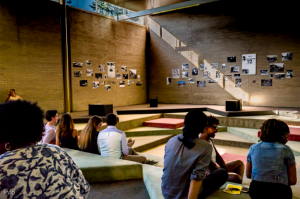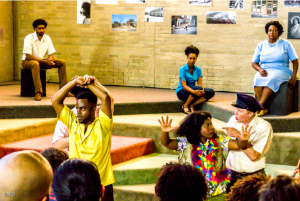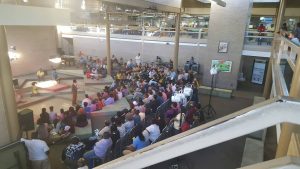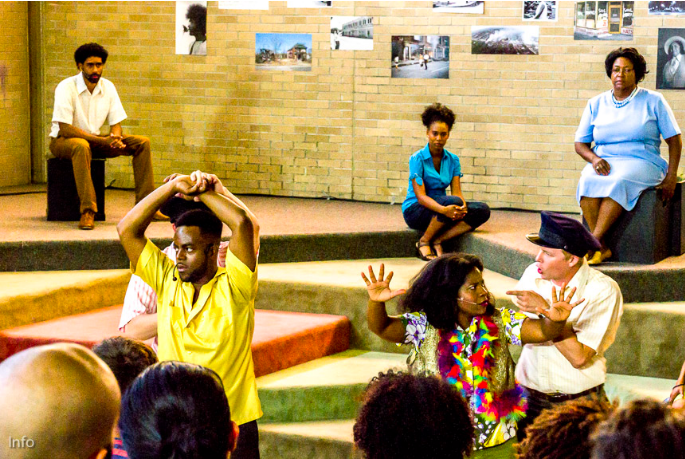I just received a text message from a friend I made while I was living in Detroit with a photo from the Joseph Walker Williams Center where the play, AFTER/LIFE: Detroit 67, will have its closing show this evening. My friend is in the audience. I am a few thousand miles away now, but if there is one thing I’ve learned while working on AFTER/LIFE, it is that the event of performing a piece like AFTER/LIFE is only one component of its performance.
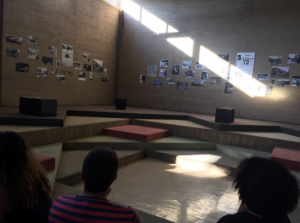
I often compare community organizing spaces to performance-making spaces, because of my interest in fusing the two. I recognize that performance can create space for people’s subjectivities to be voiced. This potential makes performance capable of complicating and counteracting popular narratives and assumptions, and capable of launching people into dialogue. I consider working at the deeply rooted or widespread assumptions significant to creating more equitable realities, but previously I often found community organizing created more direct and tangible changes in our society.
I was left asking, what can theatre really do for people? If there are other things that do the work of challenging history and the present and build action for the future, why should we try to make hour and a half “plays for social change”?
“There are limits to what a performance can do,” Kristin said to me as she, Lisa and I spoke after a production meeting. But sometimes, she said, “the sheer circumstance of it,” can set into motion the kinds of tangible and less perceptible changes I think I am looking for. And this I experienced in the AFTER/LIFE process.
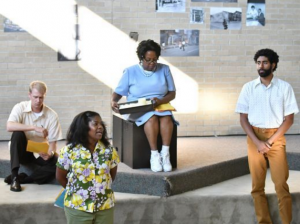
One of the unique things about AFTER/LIFE: Detroit 67, as a performance project, is the deep and deliberate commitment to listening and serving the community of Virginia Park residents (Virginia Park is the neighborhood where the Rebellion began and where the Williams Center is today.) Biggs, who conceived the project, AFTER/LIFE: Detroit 67, articulates that one of the project’s primary goals is “forging lasting partnerships” between MSU, the Joseph Walker Williams Center, and other individuals and community groups in and around Detroit. Written into the project’s proposal are beginnings of partnerships that extend beyond the performance this summer, in the form of a yearly Arts Festival commemorating the Rebellion and the continuing contributions of women and girls in Detroit, and in the connections the project will foster between community members, performers, community groups and institutions like the Williams Center.
AFTER/LIFE may be performing the final show in a run of performances tonight, but the relationships forged will remain. It is these relationships that will continue to support the work of developing dialogue about the Rebellion, and that can continue to honor and support the work of women in particular in Detroit’s past, present and future.
Relationship-building is a part of the performance. That is something AFTER/LIFE has shown me. For example on July 11th, when the AFTER/LIFE company rehearsals had just moved to the Williams Center. Previously, rehearsals had been elsewhere, in part not to interrupt the activity at the Center. Before loading in, Lisa invited all the AFTER/LIFE company members and the Williams Center Staff to an informal meet and greet in the lobby at the Center. We brought lemonade and snacks, and ordered three cakes from a woman at the Center who owns a baking business. The event was an introduction for the Williams Center members and staff, to introduce ourselves and explain what we would be doing singing and making noises in the lobby area the next two weeks! It also became a moment where some Center members shared their 67 stories with the company, as often happens when you just ask. (Most people over 40 who lived in Detroit have a 67 story you haven’t heard or seen in any paper.)
The company was not presenting about the performance, or pitching ticket sales. Tickets were free and our promotion consisted of a poster and a stack of postcards to take nearby. It was a moment to invite community members into the process of AFTER/LIFE and to its performances. It was a moment to build relationships in an empathic space, with honor and respect for each other. The meet and greet was an acknowledgment that AFTER/LIFE is a project that the members of the community, whose stories the performances are retelling, and whose spaces and resources we are using, are valued collaborators in this project. It was also a thank-you.
The process of AFTER/LIFE also illuminated the potentiality of performance creating efficacious relationships and tangible changes to people’s lives, as it connected residents, community groups and organizations together. The expanded scope of AFTER/LIFE as a creative project (a play in performance) into the disciplines of community organizing, by prioritizing the voices and needs of a community, and thinking about building relationships and conversations in long-term ways, AFTER/LIFE took on some of the qualities and efforts of community organizing, using performance as a platform for doing so, and maintaining creative, empathic, and inclusive qualities of collaborative theatre-making.
During AFTER/LIFE, some of the most profound experiences actors (and my friend who sent me the photo) shared with me were the first hand stories that came from the company and community members who have memories of the Rebellion. One actor commented in an interview, “to hear someone actually verbalize their experience, is so much more realistic,” a sentiment which many of the actors shared. Many expressed that the “intimacy” and the “closeness” of a living person sharing their own story was infinitely more visceral an experience than, say, reading an article. In that way, AFTER/LIFE really acknowledged the power of people telling their own stories, and, as Horton described, our work acknowledged the “different kinds of expertise in the room” at any given point during the process. This kind of work resists the idea that the artists (or any persons involved) are the sole knowledge bearers. I have come to believe that in theatre and art-making, when we proffer the idea that the capital-P Performance is the moment when community engagement happens, we restrict our work as theatre artists and community organizers. We divide ourselves into hierarchical positions and stop each other from creating and practicing the equitable futures we can imagine with theatre and performance.
